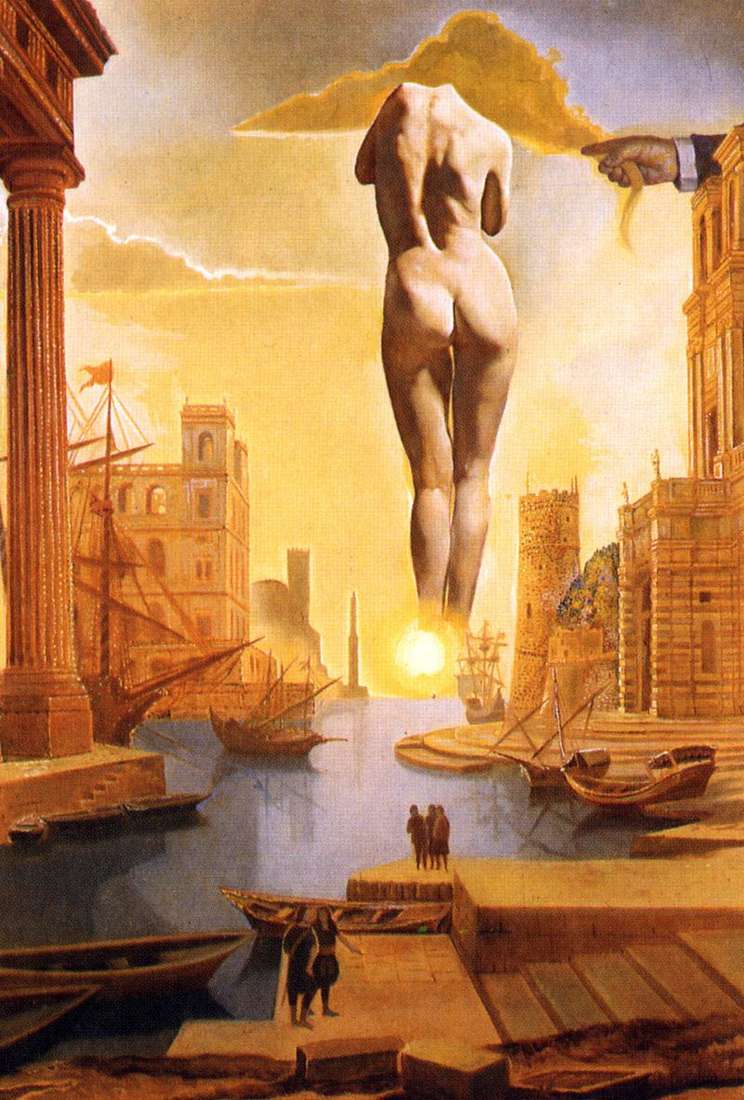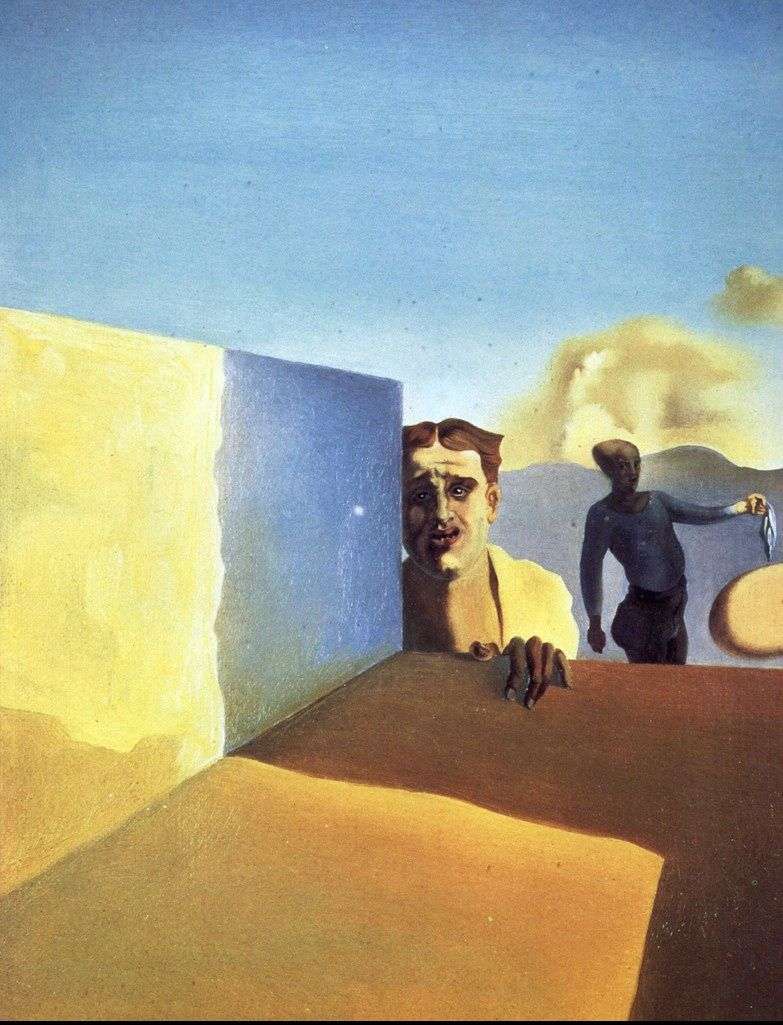
The three depicted in the picture are, undoubtedly, a family. A man, a woman and a child standing in the background of a golden cloud. The cloud is huge and expressive. One of its edges is curled by a dark thundercloud, the other is illuminated by a bright sun. The cloud is supposedly the fourth character in the picture. The whole canvas is filled and saturated with golden light. The color scheme is a favorite combination of Dali, blue and gold.
People in the picture stand in a tight group. But this group is heterogeneous, like earth, hell and heaven. Heaven is represented here as a female figure. The woman is naked. Its forms seem slightly hypertrophied, but it is certainly beautiful. There is in her something angelic: golden curls, shining skin. The terrestrial beginning here is a man. He is dressed: he wears a suit, boots, in his hands he holds a hat.
If a woman is depicted in a realistic manner, then the man seems to be a monument to himself, hewn out of a light stone or molded from wet sand. And, finally, their child. Adsk is a warped creature worthy of taking an honorable place in the kunstkammer. One foot is deformed, the elbow of the bent hand continues with a bizarre outgrowth, under which a prop is substituted. Such a crutch-crutch is a typical detail for Dali’s paintings, she appears on many of his canvases.
The head of the child is shaped like a melon. He wears dark clothes with a patch on his back. The faces of all three are hidden from the viewer, but the figures are full of expression. The woman leaned her head to the man’s shoulder, wrapping it around her neck. The man lowered his head sadly. This couple looks like the personification of sorrow. One hand of a woman rests on the ugly head of a child.
In the distance, on the horizon, you can see tiny buildings and trees. This picture is another attempt by the artist to cut the painful knot into which relations within his family were tightened. Early death of the mother, quarrels with his father, mutual misunderstanding. He is looking for his place in the mise-en-scene “parents and a child” and finds himself in the image of a phantasmagoric freak. And yet it is impossible not to wonder: what does the harp have to do with it? The only hint of the harp is the angular contour formed by the child’s legs. And on his ugly foot lie, continuing on the ground, whether cracks, or ragged strings.
Dali wrote this picture from 1932 to 1934. In the thirties the harp became the leitmotif of several of his canvases. Invisible harp, cranium harp, contemplation of the harp. Harp with strings of barbed wire, donated by the artist American actor Harpo Marx.
Harp is a musical instrument, an attribute of art. And at the same time, it is a frame, a frame, a frame for strings that give birth to art itself. A solid, stable form, framing and limiting the volatile subtle substance, music. It’s no wonder that this image took such a place in the artist’s fantasies.
 Dali’s hand steals the golden fleece to show the Gala-Dawn by Salvador Dali
Dali’s hand steals the golden fleece to show the Gala-Dawn by Salvador Dali Masochistic tool by Salvador Dali
Masochistic tool by Salvador Dali A sleeping woman in the background of a landscape by Salvador Dali
A sleeping woman in the background of a landscape by Salvador Dali Honey is sweeter than blood by Salvador Dali
Honey is sweeter than blood by Salvador Dali Barber, saddened by the cruelty of good times by Salvador Dali
Barber, saddened by the cruelty of good times by Salvador Dali Sleep laying a hand on the male back by Salvador Dali
Sleep laying a hand on the male back by Salvador Dali Imperial monument to the woman-child by Salvador Dali
Imperial monument to the woman-child by Salvador Dali The Battle of Tetuan by Salvador Dali
The Battle of Tetuan by Salvador Dali